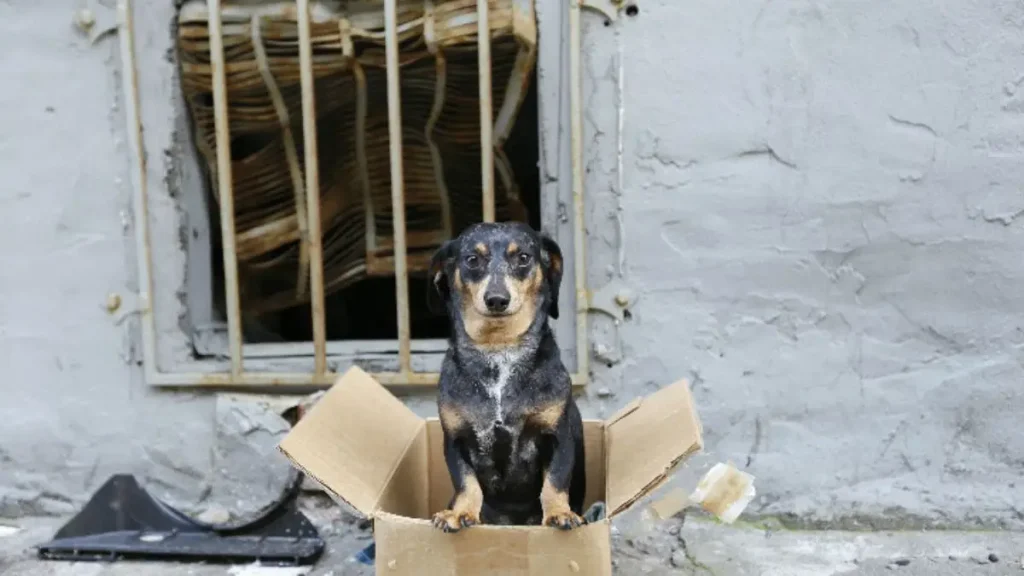Ohio Homeowner Faces Charges After 38 Dogs and 7 Ferrets Found in Poor Conditions
I want to start by telling you about a troubling discovery that happened recently in Ohio. Inside a single home, authorities found 38 dogs and 7 ferrets living in conditions no animal should ever endure. Imagine the place—feces piled inches deep, overcrowding, and severe neglect. This isn’t just another news story; it’s a harsh reminder of how some animals suffer in silence.
You might be wondering how something like this can happen right under people’s noses. What led to this situation? And what happens to those animals now? I’ll take you through the facts, the background, and why cases like this matter far beyond just one home.
This story is important because it shines a light on the reality of animal hoarding and cruelty, issues that many don’t fully understand. I’ll help you see what’s really going on and how you can spot signs of trouble before it gets this bad.
What Are Animal Hoarding and Cruelty? Understanding the Background
When I first read about the case from Cincinnati, I realized many people don’t really know what animal hoarding means. It’s more than just having a lot of pets. Animal hoarding is when someone keeps more animals than they can properly care for, often leading to neglect. In this Ohio case, the owner clearly couldn’t manage the care needed for so many animals, resulting in poor living conditions and suffering.
According to experts, hoarding is often linked to deeper psychological issues. It’s not just about the animals—it’s about the person struggling to manage their situation. This makes it a complicated problem, both for the animals and the community. The Cincinnati report highlighted how the owner’s inability to care for so many animals resulted in a dangerous buildup of waste and unsafe conditions.
By understanding what hoarding really is, you get a clearer picture of why these animals ended up in such bad shape. It’s not simply cruelty; it’s a mix of neglect and a mental health challenge that needs attention.
The Conditions Discovered — What “Deplorable” Really Means
The WCPO report painted a grim picture of what “deplorable” conditions looked like inside that Ohio home. Imagine rooms filled with waste, where animals were cramped together with little to no space to move. The smell and filth were so overwhelming, it was clear the animals were living in a state of constant suffering.
These conditions don’t just look bad; they cause serious health problems. Dogs and ferrets living in filth are at high risk of infections, parasites, and injuries. The stress from overcrowding can also affect their behavior, making rescue and rehabilitation even harder.
Reading WCPO’s detailed account helped me understand how urgent rescue efforts were. This wasn’t just about cleaning a mess—it was about saving lives and giving these animals a chance at recovery.
What do you think communities can do to better handle cases like this? Share your thoughts below.
Legal and Rescue Actions Taken in Ohio — What Happens Next?

According to WLWT, four individuals connected to the home have been charged with serious animal cruelty offenses. The legal proceedings are ongoing, but this highlights how the law steps in to protect animals when neglect reaches such dangerous levels.
Animal control and rescue agencies played a crucial role here. After removing the dogs and ferrets, they began medical evaluations and worked to find temporary foster homes. The legal process will decide what happens to the owners, but for the animals, this rescue was a new beginning.
Knowing about these legal actions helps us see the full picture—not just the horror of the conditions, but also the hope that comes with enforcement and rescue.
Broader Impact and Statistics on Animal Hoarding Cases in the US
You might think cases like the Ohio home are rare, but sadly, they’re more common than many realize. Animal hoarding happens across the country and affects thousands of animals every year. According to the Humane Society, hundreds of hoarding cases are reported annually, each with dozens of animals trapped in unsafe conditions.
These situations strain local animal shelters and rescue groups, who often scramble to provide care and find new homes. Beyond the animals, there’s a wider community impact—health risks, neighborhood disturbances, and emotional toll on everyone involved.
Knowing these facts helps us see that the Ohio case isn’t just isolated bad luck. It’s part of a larger problem that needs attention from all of us.
Similar to this Ohio case, recent incidents like the deadly fire in Plainview that affected pets remind us how important animal safety and community awareness really are.
How to Identify and Report Animal Cruelty or Hoarding in Your Community

So, how do you spot a problem before it gets as serious as in Ohio? Some signs to watch for include excessive numbers of animals in one home, strong odors from waste, animals showing signs of neglect like untreated wounds, and loud, constant noise from distressed pets.
If you suspect animal cruelty or hoarding, don’t ignore it. You can report it to local animal control, shelters, or even police. Many communities have hotlines or online reporting tools. Acting early can save lives and prevent suffering.
I also recommend following social media accounts of local shelters or national organizations like ASPCA—they often share tips and real stories that help raise awareness.
Plus, many local groups stay connected through WhatsApp communities where you can get timely updates and practical advice right on your phone.
Supporting Animal Welfare — What You Can Do
If this story moved you, you’re probably wondering how to help beyond just reading. You can volunteer at animal shelters, foster pets in need, or donate to organizations working on rescue and rehabilitation.
Even simple actions—like educating friends about responsible pet ownership or sharing awareness posts on social media—make a difference. Every bit helps.
Remember, supporting animal welfare is a community effort. When we work together, we can prevent tragedies like the Ohio case and create safer, kinder places for all animals.
Have you ever witnessed something like this in your neighborhood? Share your experience to help others.
Final Thoughts
This Ohio case isn’t just news—it’s a wake-up call. It reminds us how animals depend on us and how neglect can spiral into tragedy. But it also shows the impact of communities, laws, and caring individuals stepping up.
If you take one thing from this story, let it be the importance of vigilance. Whether it’s watching for signs of trouble, reporting concerns, or supporting local rescues, every action counts. Together, we can help prevent situations like this from happening again.
If you found this information helpful and want to stay connected with others who care about animal welfare, be sure to follow. Joining the conversation and staying informed is the best way to make a real difference.
Disclaimer: The details shared in this article are based on current reports and may evolve as investigations proceed. Legal outcomes are pending, and all individuals are presumed innocent until proven otherwise. For the latest updates, please refer to official sources.
⭐ Subscribe to Our Newsletter
Subscribe to the publishers newsletter to receive the latest news and updates directly in your inbox


